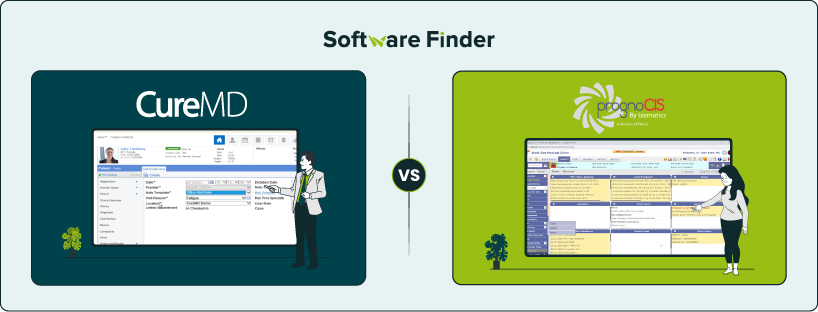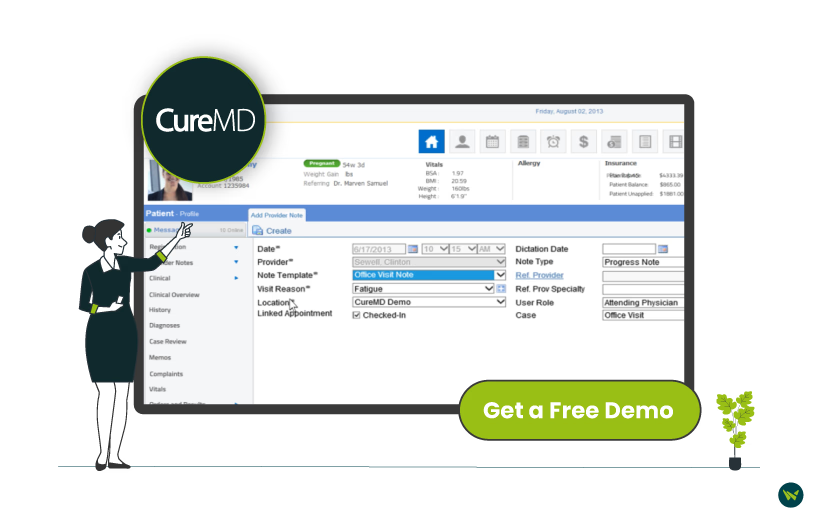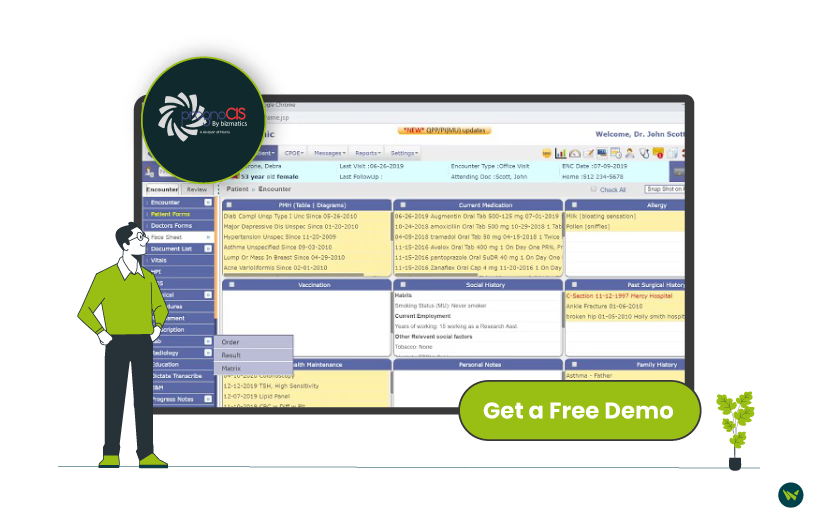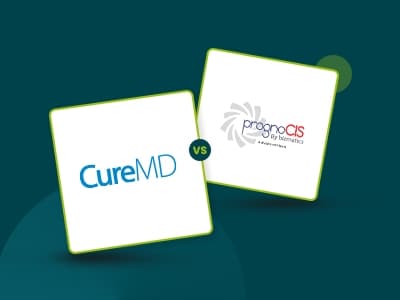
Monthly Price: $295/provider/month Best for: OB/GYN, Cardiology, Urgent Care Mobile App: iOS Rating: 3.3/5 *Pricing is subject to change. | Monthly Price: Staring at $280 Best for: Internal Medicine, Cardiology, Family Practice Mobile App: iOS, Android Rating: 4/5 *Pricing is subject to change. |
The electronic health record (EHR) landscape continues to evolve, predominantly driven by the growing demand for interoperability, automation, and specialty-specific care solutions. In 2025, the US healthcare system continues to move toward value-based care models due to the need for flexible and scalable EHR platforms.
According to a 2025 report, EHR adoption rates remain high across several medical specialties, with 94% of primary care, 95% of internal medicine, and 89% of obstetrics-gynecology (OBGYN) practices implementing these systems—underscoring a strong demand for specialty-tailored platforms.
However, the selection process can become critical for practices striving to streamline operations, reduce charting time, and improve clinical decision-making.
This guide examines CureMD vs PrognoCIS – two major ONC-certified EHR vendors offering cloud-based solutions designed for multi-specialty practices. We are going to break down their core features, pricing models, and user feedback to help you decide which EHR aligns best with your clinical and operational needs.

CureMD is a cloud-based healthcare solution that offers an integrated suite of tools such as an electronic health record (EHR), practice management, medical billing, and patient portal capabilities. Some of its key features include e-prescription, lab integration, and seamless interoperability.
The platform is designed to streamline administrative processes while also improving patient engagement. The Black Book 2025 has recognized CureMD as a top-ranked EHR in 2025, making it quite popular among small- to medium-sized businesses.

PrognoCIS is designed to support practices across various medical specialties. The platform offers customizable templates, allowing providers to tailor workflows to their unique clinical needs. It enables the delivery of value-based care aimed at improving health outcomes with its HIPAA-compliant platform.
With integrated patient engagement features that include patient portals and e-signature capabilities, PrognoCIS enhances operational efficiency and promotes higher patient satisfaction.
Feature | CureMD | PrognoCIS |
Practice Management | ✓ | ✓ |
Revenue Cycle Management | ✓ | ✓ |
Voice Recognition | ✓ | ✓ |
Interoperability | ✓ | ✓ |
Telehealth | ✓ | ✓ |
AI-Capabilities | ✓ | ✗ |
Integrated Clearinghouse | ✓ | ✓ |
Case Management | ✗ | ✓ |
CureMD | PrognoCIS |
Pros: Intuitive design and smooth interface On-the-go access on the mobile app Streamlined scheduling and easy integrations Cons: May have disrupted EOB and balance tracking Claim scrubbing process may experience delays | Pros: Fast and flexible customization Easy CPT/ICD code updates Accessible patient account details Cons: May not reliably deliver patient appointment reminders Overwhelming default assessment forms |


CureMD offers a straightforward pricing model with four pricing packages, each consisting of various features while also catering to different types of organizations:
- Practice Management – Custom Pricing
- Electronic Health Records – $295/provider/month
- All-in-One (PM + EHR) – Custom Pricing
- Billing Services – As low as 3% of Collections
Disclaimer: Pricing is subject to change.
On the other hand, PrognoCIS offers a flexible pricing model tailored to the specific requirements of healthcare providers, the number of users, features, and capabilities. Pricing for the EHR platforms starts at $280/provider/month, with the total cost depending on the size of the practice, selected modules, and specialty-specific customizations.
Disclaimer: Pricing is subject to change.
Overall, CureMD offers a more transparent pricing structure comparatively. But, if you are looking for an EHR with a flexible approach toward plans, then PrognoCIS can be an ideal choice.
Still interested in exploring a complete breakdown of EMR/EHR costs? Read our comprehensive guide on the cost of EHR in 2025.
CureMD is frequently recognized for its intuitive interface and broad functionality that supports a wide range of medical specialties. Users often highlight its ease of navigation and the reliability of its customer support. Several users have commended its mobile access, with one user stating.
I like the simplicity of the software. Everything about CureMD is very easy to navigate. Another plus is that I can view some elements of the software via an app--which is super helpful when I am on the go.
On the downside, a few users have experienced issues with claim processing, reporting intermittent delays during the claim scrubbing stage. Some have reported issues with EOB and balance tracking.
In contrast, PrognoCIS is predominantly praised for its customization and easy adaptability for all specialties and workflows. Users also praise it for its intuitive interface and its adaptability to various devices. One hospital and healthcare employee writes.
It (PrognoCIS) is a very comprehensive EMR (and billing system) with just about every feature I can imagine without slowing me down. You can activate or hide whichever features you wish. It communicates beautifully with all my labs, physicians, and other vendors. The fact that it is compatible with Windows and Apple, it has a very nice iPhone app for both EMR and patient portal.
However, some users have reported issues with appointment reminders, while others have found patient engagement tools to be limited.
When deciding between CureMD and PrognoCIS, the choice depends on practice size, specialty, and long-term scalability goals.
CureMD is ideal for practices seeking a user-friendly platform with AI-powered tools, advanced billing services, and powerful telemedicine solutions. Its transparent pricing and integrated features make it a strong choice for small to mid-sized practices prioritizing operational efficiency.
PrognoCIS, on the other hand, excels in customization, interoperability, and a more advanced patient portal. It offers greater adaptability across specialties and stronger support for patient engagement and workflow personalization.
Ultimately, if your priority is flexibility and customization, PrognoCIS might be a better fit. Whereas CureMD suits those needing built-in automation and AI-driven workflows.
